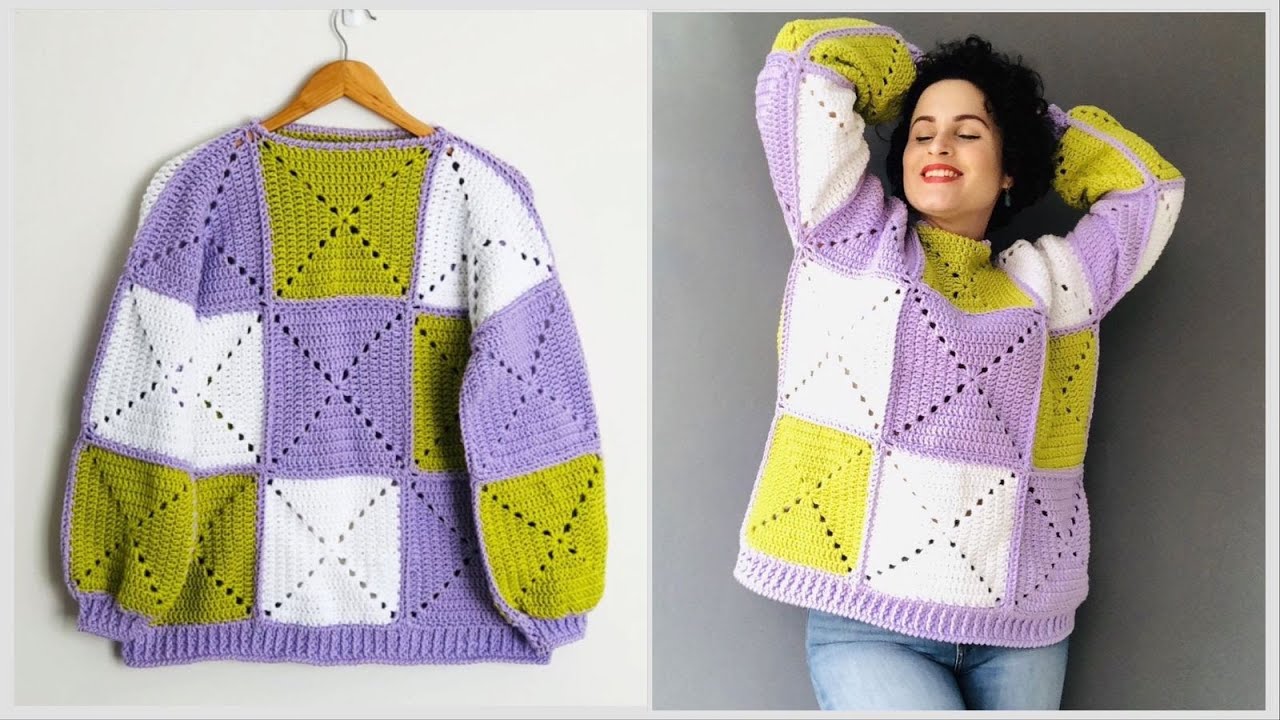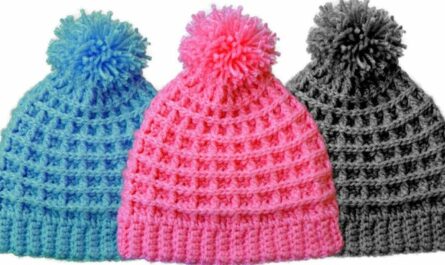The Enduring Allure of the Crochet Square Jacket
- Modular Construction: At its heart, the square jacket is a modular garment. This means it’s built from individual crocheted squares (or sometimes rectangles or half-squares) that are then joined together. This modularity makes it highly adaptable and approachable.
- Creative Freedom: The possibilities for color, pattern, and texture within each square are virtually limitless. This allows for immense creative expression, whether you prefer a riot of vibrant colors or a sophisticated, monochromatic design.
- Stash Buster Extraordinaire: Got a collection of beautiful leftover yarn balls? A square jacket is the perfect way to turn those scraps into a cohesive and stunning piece.
- Portable Project: Crocheting individual squares is highly portable. You can easily work on a few motifs on the go, making it ideal for travel or small pockets of free time.
- Timeless & Versatile: Depending on the squares, yarn, and fit, a crochet square jacket can evoke a vintage, bohemian, artistic, or even contemporary vibe. It can be a cozy layering piece, a vibrant statement, or a subtle accent.
Deconstructing the Crochet Square Jacket
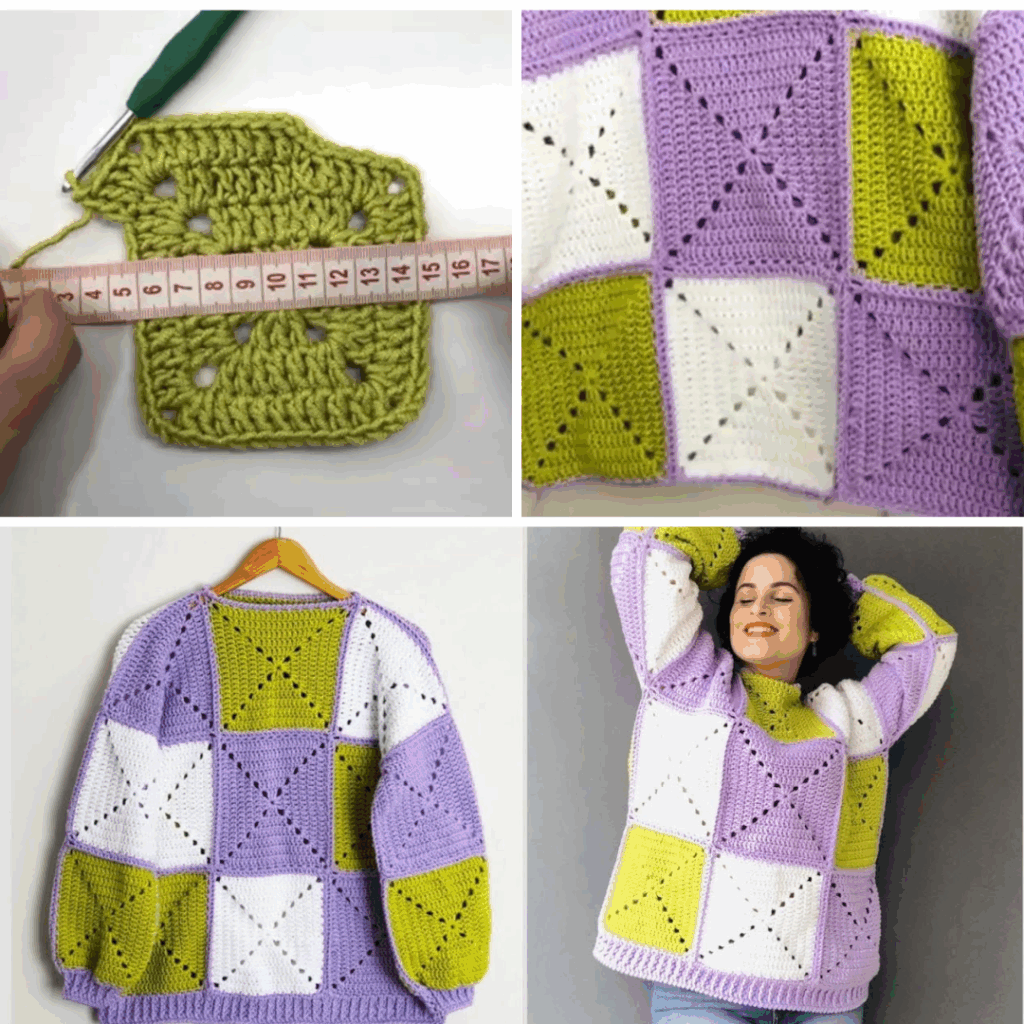
While “granny square jacket” is the most common association, the concept is broader. Here’s what makes up these unique garments:
1. The Squares (Motifs)
- Granny Squares: The most iconic choice. These are typically crocheted in rounds, building concentric squares with clusters of double crochet stitches. They can be solid, multi-colored, or feature intricate designs within the square.
- Solid Squares: Simple squares worked in single crochet, half double crochet, or double crochet, creating a dense, uniform fabric. These highlight yarn texture or subtle color changes.
- Lace Squares: Squares featuring openwork, picots, or intricate lace patterns. These create a lighter, more ethereal garment.
- Textured Squares: Squares incorporating bobbles, puffs, cables, or post stitches for a highly tactile fabric.
- Unique Motifs: Beyond basic squares, some designs use other geometric shapes or even asymmetrical motifs that, when joined, form a larger square-like fabric.
2. The Yarn
- Fiber: Your yarn choice will dictate the drape, warmth, and feel.
- Acrylic: Affordable, durable, machine washable, and comes in a vast array of colors. Great for a sturdy, colorful jacket.
- Wool/Wool Blends: Offer warmth, elasticity, and excellent stitch definition. Ideal for a cozy, structured jacket.
- Cotton/Cotton Blends: Breathable, good for warmer climates, and creates a lovely stitch definition. Perfect for a lighter, spring/summer jacket.
- Blends: Often combine the best qualities of different fibers.
- Weight:
- Worsted (Category 4) or DK (Category 3): Most common for granny squares, offering a good balance of detail and working speed.
- Chunky/Bulky (Category 5/6): For a very quick, oversized, and cozy jacket with bold squares.
- Fingering/Sport (Category 1/2): For a more delicate, intricate, and often more time-consuming jacket.
3. Construction Methods
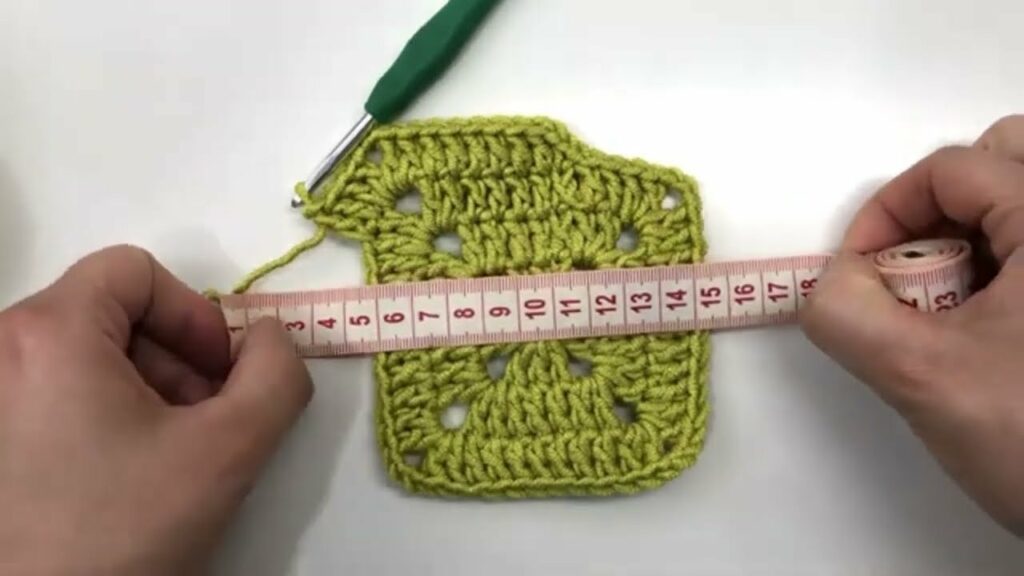
The magic of the square jacket lies in how the individual motifs come together:
- “Join-As-You-Go” (JAYG): This popular method allows you to join squares directly as you crochet the final round of each new square. It’s incredibly efficient as it eliminates almost all post-crochet seaming.
- Whip Stitch/Mattress Stitch: Individual squares are completed, laid out according to a schematic, and then neatly sewn together using a tapestry needle. This offers flexibility in layout but can be more time-consuming for seaming.
- Slip Stitch/Single Crochet Joins: Squares are finished, then crocheted together using slip stitches or single crochet stitches along their edges. This can create a visible ridge, which can be a design feature.
- Seamless Construction (Less Common for Square Jackets): Some patterns might integrate square-like elements directly into a seamless top-down or bottom-up construction, but the true “square jacket” typically involves joining individual motifs.
Designing Your Own Crochet Square Jacket
The customization possibilities are endless:
- Color Palette:
- Rainbow Explosion: Embrace the classic vibrant, multi-colored granny square look.
- Monochromatic/Gradient: Use different shades of the same color for a sophisticated, subtle effect.
- Limited Palette: Choose 2-4 complementary colors for a cohesive yet striking design.
- Scrapghan Style: Use up every last bit of yarn for a truly unique, scrappy jacket.
- Square Size: Larger squares mean fewer squares to make and join, resulting in a quicker project. Smaller squares allow for more intricate patterns and a denser fabric.
- Layout & Fit:
- Schematic: Most patterns will provide a diagram showing where each square goes (body, sleeves, back, front panels).
- Basic Fit: Often starts with a simple rectangular body, with sleeves attached. Can be boxy, oversized, or more fitted with strategic shaping or square placement.
- Adding Panels: Sometimes additional solid or ribbed panels are added at the cuffs, hem, or collar for a more finished look and better fit.
- Embellishments:
- Edgings: A simple shell stitch, picot, or ribbed edging around the collar, cuffs, and hem can beautifully frame the jacket.
- Pockets: Crocheted squares (or a solid block of stitches) can be added as functional or decorative pockets.
- Buttons/Zippers: Depending on the design, closures can be incorporated.
Essential Skills for Crocheting a Square Jacket

- Basic Crochet Stitches: Chain (ch), Slip Stitch (sl st), Single Crochet (sc), Half Double Crochet (hdc), Double Crochet (dc).
- Working in Rounds & Rows: Most squares are worked in rounds, while some elements (like front bands or collars) might be in rows.
- Increasing & Decreasing: For shaping, especially if not all squares are simply stitched together as rectangles.
- Joining Methods: Mastery of at least one joining technique (JAYG, seaming, slip stitch join) is crucial.
- Weaving in Ends: Absolutely critical, especially with multi-colored squares. Neatness here makes a huge difference.
- Blocking: Essential for ensuring your squares are uniform in size and shape, making joining much easier and giving the finished jacket a professional drape and finish.
The Construction Journey (General Steps)
- Choose Your Pattern & Yarn: Select a square jacket pattern that inspires you and acquire all necessary yarns.
- Swatch & Gauge: Crochet at least one square (or a swatch if it’s a solid stitch) in your chosen yarn and hook. Block it. Measure it to ensure it matches the pattern’s gauge. This is paramount for sizing and ensuring squares fit together.
- Crochet All Your Squares: This is often the longest part. Work on each square, weaving in ends as you go if not using JAYG.
- Layout Your Squares: Arrange your completed squares according to the pattern’s schematic. This helps visualize the garment and ensure correct placement.
- Join the Squares: Use your chosen joining method (JAYG, seaming, or crocheted join) to connect all the motifs, forming the back, front panels, and sleeves.
- Assemble the Jacket: Join the body pieces (shoulders, side seams) and attach the sleeves.
- Add Finishing Details: Crochet edgings for the neckline, front opening, cuffs, and hem. Add pockets, buttons, or other embellishments as desired.
- Final Blocking: Give the entire finished jacket a thorough block. This will relax the fabric, even out tension, and give it a beautiful, polished drape.
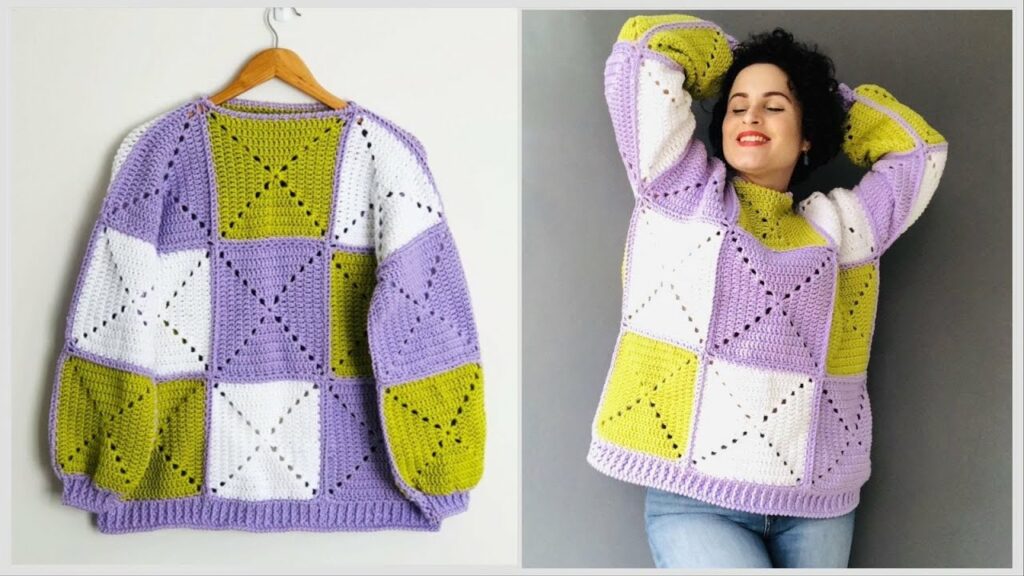
Tips for Success
- Consistent Tension: Try to maintain even tension throughout all your squares, especially within the same square, to ensure they are the same size.
- Weave in Ends as You Go (if not JAYG): It’s far less daunting to weave in tails after each square than facing a mountain of them at the end.
- Block Your Squares INDIVIDUALLY: Before joining, blocking each square to its correct size makes the joining process much smoother and ensures a neater finished garment.
- Don’t Rush the Joining: Take your time with the joining method. A neat join makes all the difference in the final appearance.
- Try On as You Go (if JAYG): If you’re doing a JAYG construction, trying it on periodically can help you gauge the fit.
Video Tutorial ;
The crochet square jacket is more than just a piece of clothing; it’s a canvas for creativity, a cozy companion, and a wonderful reflection of handmade artistry. Whether you’re a seasoned pro or an adventurous beginner, embarking on a square jacket project promises a rewarding journey and a unique addition to your wardrobe.
